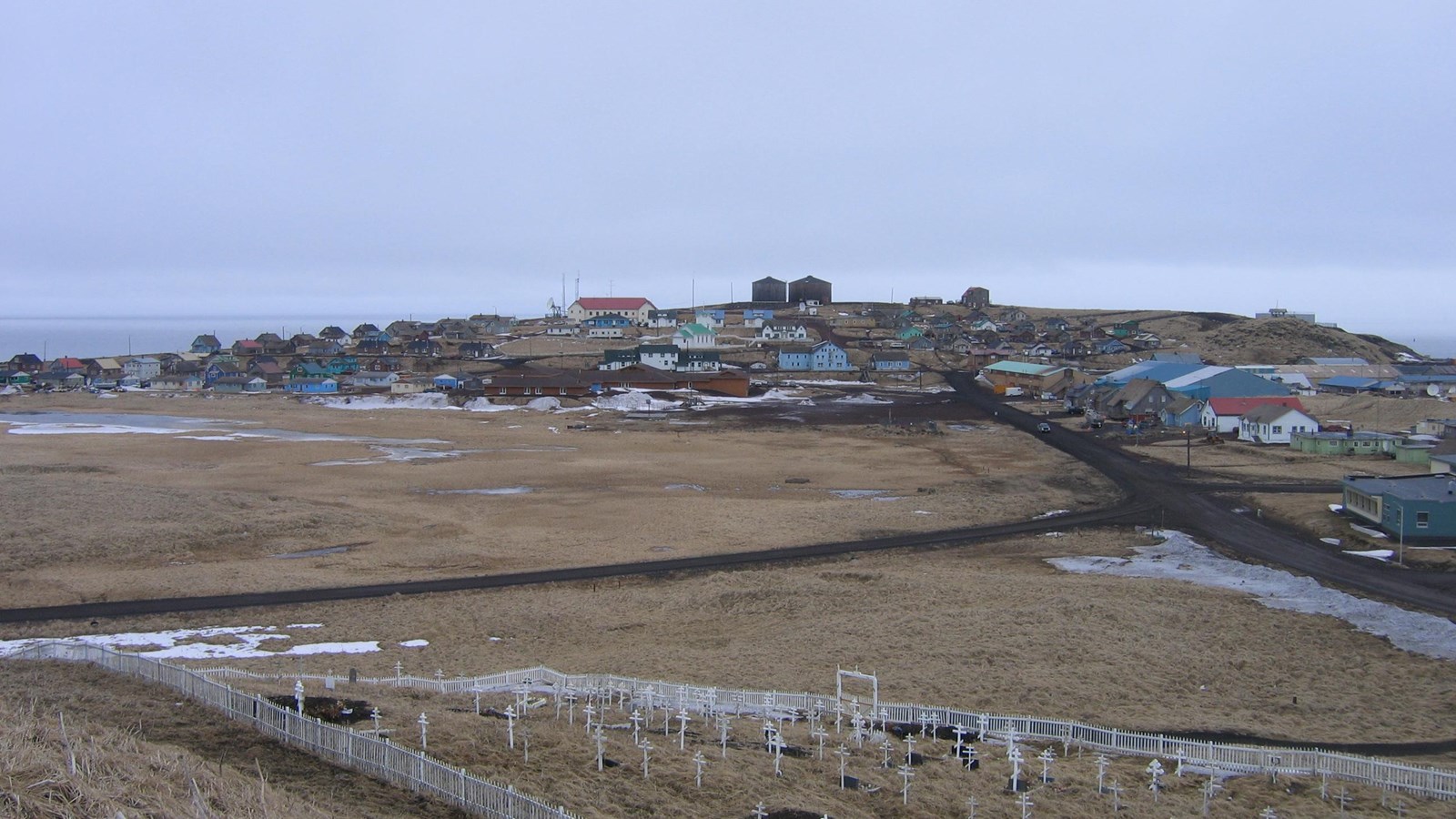Last updated: June 19, 2020
Place
Seal Islands Historic District National Historic Landmark

NPS Photo/J. Clemens
The Pribilof Islands are two hundred and fifty miles north of the Aleutian Chain and three hundred miles west of the Alaska mainland. The northern fur seals of the Pribilof Islands attracted hunters, Russian traders, and the United States Government.
When Russian traders discovered the world’s largest single herd of mammals--the northern fur seal--on the islands of Saint George and Saint Paul, the islands became the primary site of the world’s fur seal industry. This industry generated conflict between nations and peoples for two hundred years from Russian landing in 1786 until Alaska statehood in 1959. An international conservation agreement between the United States, the United Kingdom, Russia, and Japan signed in 1911 insured the preservation of the flourishing fur seal herds on the islands of St. Paul and St. George in an important example of the principle of international arbitration. The Seal Islands possess outstanding historical significance in the themes of industry, conservation, and ethnic heritage.
Today, remnants of the fur seal industry can be seen on Saint George and Saint Paul. The historic district includes representatives of both commercial harvesting and processing, significant historical and archaeological sites, and the unique history of the labor force.
Additional Information
Russian America Theme: A National Historic Landmark Study
National Register of Historic Places - Official nomination form
